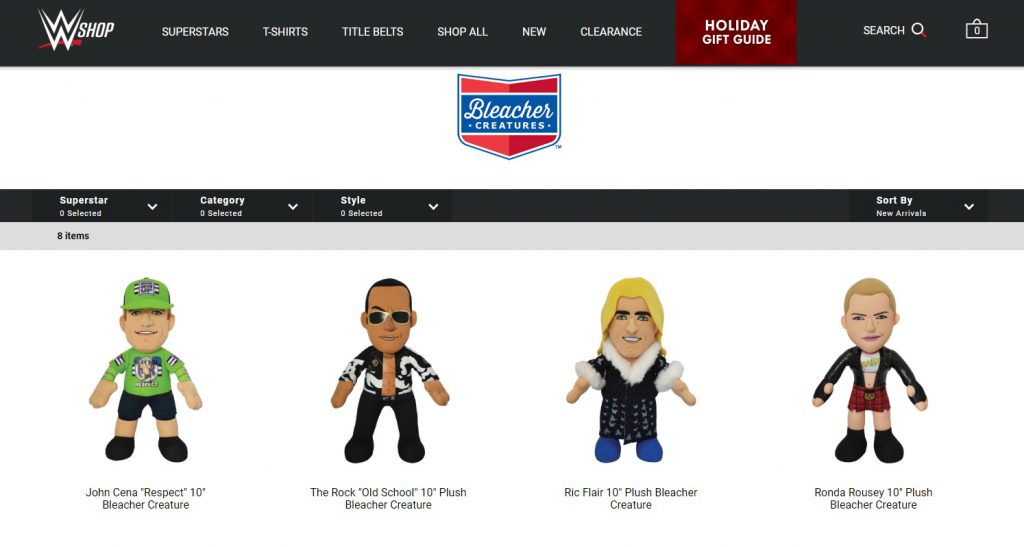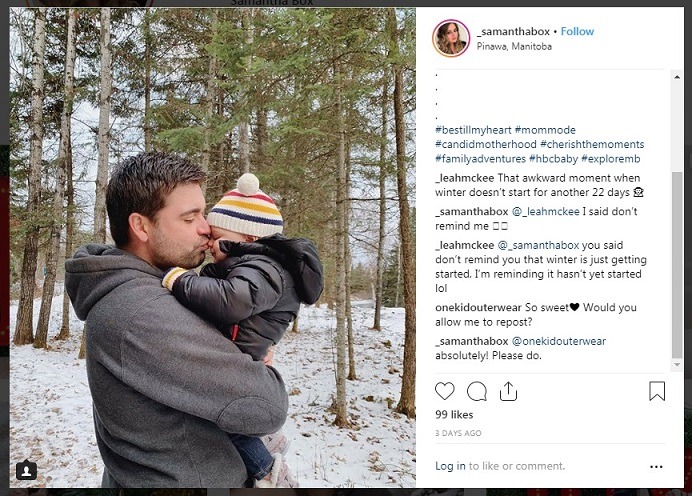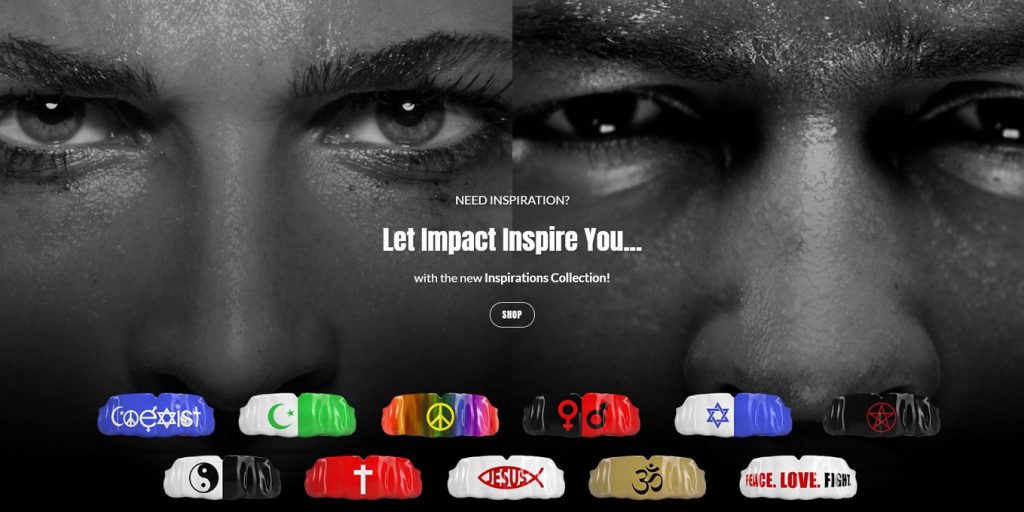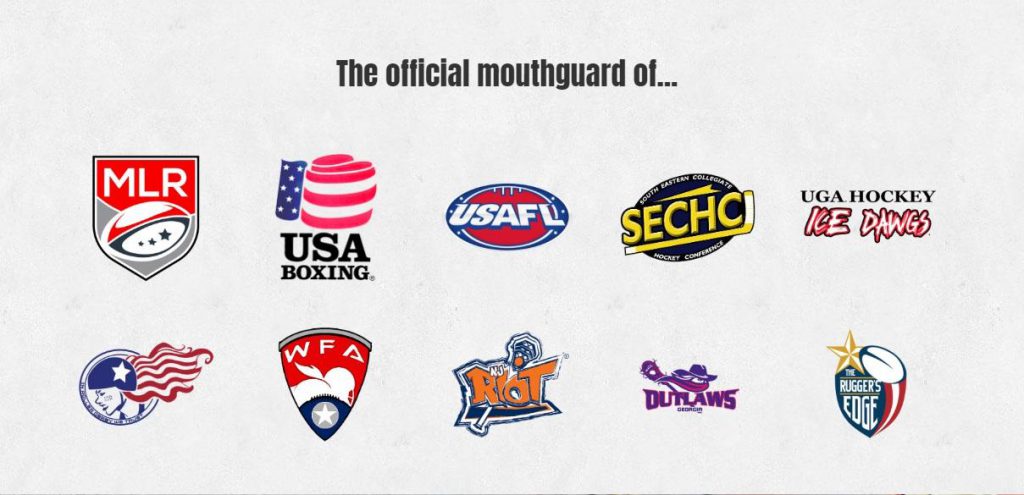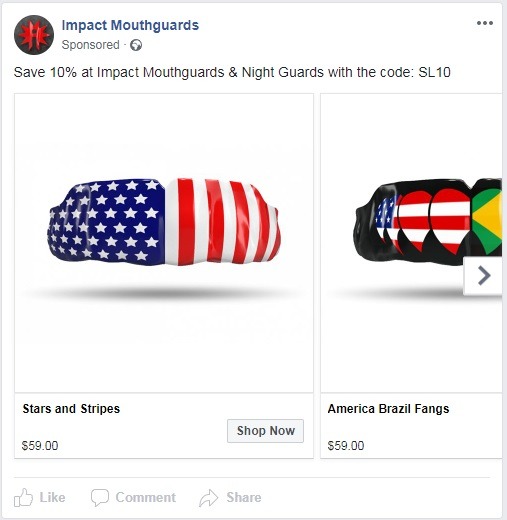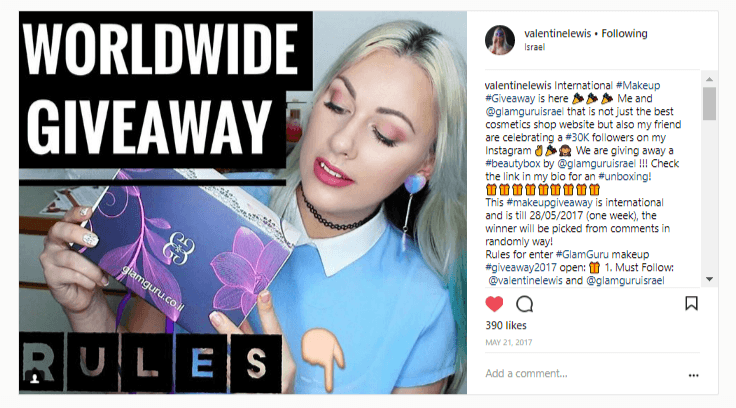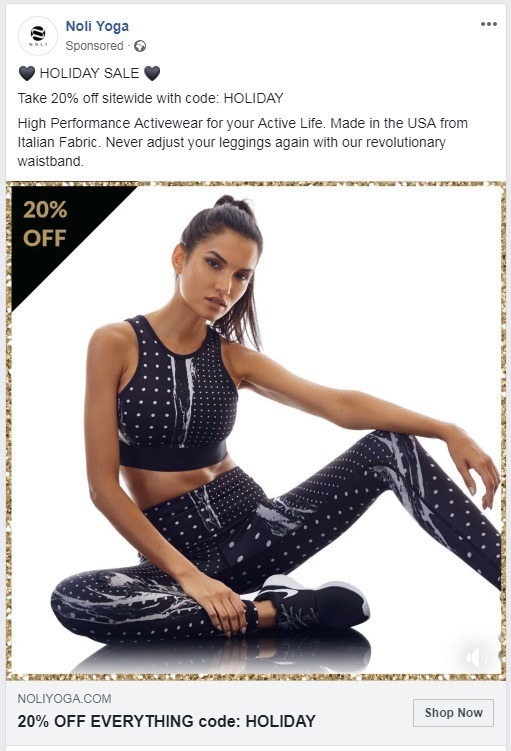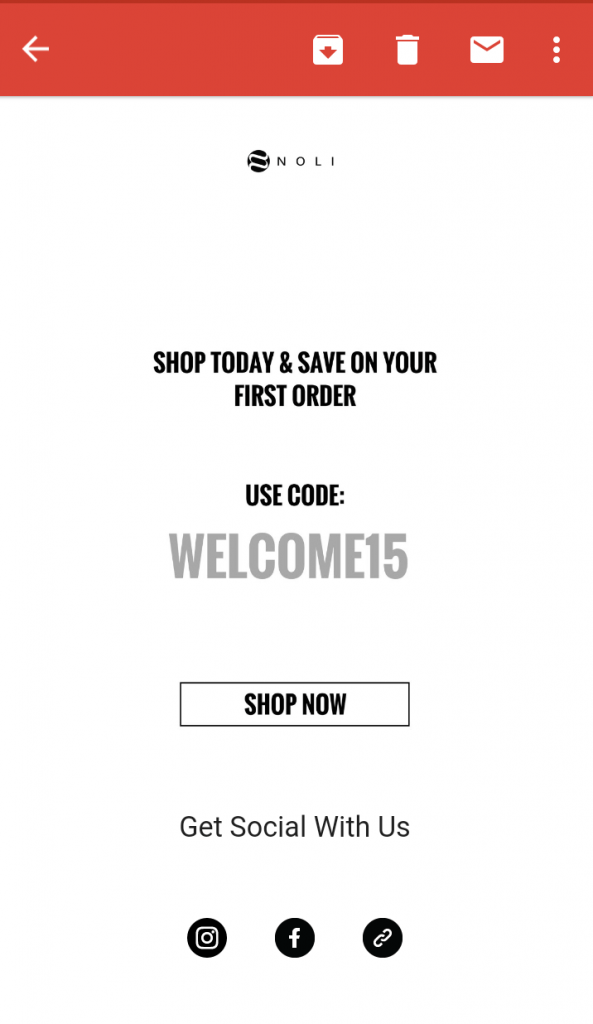The secret to building a 7-figure business lies in a winning eCommerce marketing strategy. So how are top eCommerce stores driving their sales? We’ve got the inside scoop.
We chatted with some leading eCommerce brands to find out their eCommerce marketing strategy secrets. Marketing tips you can use to scale your eCommerce business to pro level.
1. GearBunch: The eCommerce Marketing Strategy that Drives $5,000,000 in Annual Sales
Founded just two short years ago in 2017, GearBunch is already an eCommerce superstar. With their eye set on reaching the $10 million mark by the end of this year, GearBunch’s marketing strategy is paying off in a big way. So what’s their secret? Video and strategic remarketing campaigns on Google, Facebook and email. Here are four vital elements of their successful eCommerce marketing strategy.
Creating Quality Video Content Driving Millions of Views
GearBunch generates a whopping 85% of their new shoppers from Facebook advertising; and the bulk of that advertising? Quality video content.
The key to their Facebook video success is directly proportional to their video investment. Using quality video creators who produce commercial-quality video, they spend around $7,000 per video. However, their spend is wholly justified, as their Facebook video ads bring millions of views. With companies like 90 Seconds creating quality video, content is accessible to eCommerce brands big and small. If you have a smaller budget, that doesn’t mean you can’t drive views with amatuer video until you build up your business.
Bonus Content: How to Get 8 Million Facebook Views With a Smartphone Video
Using Automated Traffic Streams to Bring 6x Higher ROIs
And outside of Facebook video ads? GearBunch’s other main website source is Google Ads campaigns. Together with Facebook, Google ads generate 5,000 unique site visitors a day. By using automated Google ads app Traffic Booster, they can generate six times higher ROIs on their Google Ads spend. This includes the following ad placements:
- Google Search
- Google Shopping
- Google Display
- YouTube
Driving a 30% Return Customer Rate to Drive Profits
When it comes to remarketing, it’s not just previous site visitors they’re investing in. A key component of GearBunch’s winning eCommerce marketing strategy is their remarketing campaigns aimed at previous shoppers. This results in an impressive 30% customer return rate and an average order value of $152. Their secret? Treating their whole fulfillment process as part of their marketing strategy: providing good quality products and excellent customer service at every stage of the ordering process and then using strategic Google, Facebook and email remarketing campaigns to market specifically to their satisfied customers.
An eCommerce Email Campaign that Generates $50k Gross Profit
We know that email marketing offers the best ROIs, but without fine-tuning your email segments to offer specific campaigns to specific segments, your marketing strategy is lacking. GearBunch understands this and uses friendly, inclusive marketing to target different target audiences:
- Hot audiences who have recently bought
- Warm audiences who have either visited the site recently without buying or have purchased once from the brand
- Cold audiences who haven’t shopped on the site and haven’t visited the store in a while
Here’s an example of a win-back cold audience campaign that generated $50k profit for this eCommerce business:
Like with their video campaigns, they believe in investing in email copywriting and providing quality promotions without fake-outs, as shown in the example above. Their sequence for their big promotional emails goes something like this:
- Email 1: This promotion is running this week
- Email 2: You have four days left to take advantage of this promotion
- Email 3: You have two days left to take advantage of this promotion
- Email 4: Last 24 hours of the promotion
- Email 5: Last 12 hours of the promotion
- Email 6: Last 4/6 hours of the promotion
- Email 7: You have one more hour – you need to buy now
Bonus Tip: Their Recommended Marketing Automation Tools and Apps
Here are GearBunch’s top marketing app and tool recommendations:
- For email sequence and promotion set-up, GearBunch uses Klaviyo.
- To run remarketing on autopilot, GearBunch uses Recart.
- To run, manage and optimize Google Ads for the best ROIs, GearBunch uses Traffic Booster.
- To help manage their top-notch customer service, GearBunch uses Zendesk.
2. Bleacher Creatures: The Multi-Channel eCommerce Marketing Strategy that Evolves With the Market
What does it take to keep this eCommerce success story on top? An evolving marketing strategy that changes with the changing market landscape. Bleacher Creatures is another million-dollar eCommerce brand we can learn a lot from. Their winning marketing strategy includes adapting traffic streams, onsite marketing, influencers and email. Let’s break down some of their most successful tactics.
Overcoming the Disadvantages of Building Visibility Across Channels
Bleacher Creatures can be found online on partner sites, Amazon and their own site. Their products can also be found offline at strategic sporting events, making their remarketing a difficult nut to crack as potential shoppers can view their products in retail stores or online at the various channels. That’s not to say that making sure their products are everywhere their buyers might be isn’t working for them in a big way. It just means their unique situation makes remarketing tricky.
One of the simplest and most affordable ways they overcome this is with onside marketing. One of their most significant remarketing tools is Coupon Pop. With Coupon Pop, they can successfully build their online database, ensuring they have a strong email and social follower base to remarket to.
This doesn’t mean you need to suddenly become an omni-channel mega-business to rake in millions in sales. Instead, it is about making sure your products are where your shoppers are and using your site traffic as a remarketing tool.
Their ‘Make You Smile’ Brand Awareness Content Objective
Another key part of their eCommerce marketing strategy includes building social awareness across Instagram and Facebook. They understand the importance of content marketing to build this brand awareness, using blog content, Instagram content and Facebook video and lives to push their ‘make you smile’ objective.
Running Seasonal Social Promotions
Using Facebook, Instagram and email, Bleacher Creatures has constantly used strategic, event-based promotions to push sales over the last couple of years. Here are some examples of the type of marketing content they have run in the past:
Their Quality-Over-Quantity Email Marketing Approach
Bleacher Creatures not only understands that email segmentation is important, but that oversaturation for the sake of it isn’t a good approach. Instead, they put a lot of planning into their email frequency and content. They do this by sending only a few promotional campaign emails through the year – outside of big holiday shopping days – that are created for very specific audiences that they have segmented based on demographics.
Over and above promotional emails they also send segmented email newsletters presenting new product lines and sports news (such as wrestling or the NBA), making sure to balance staying relevant and not saturating their database’s inbox. Here is an example of one such email:
Bonus Tip: Their Recommended Marketing Automation Tools and Apps
- To embed Instagram posts onto their site, Bleacher Creatures uses Snappet.
- To grow their social and email databases, Bleacher Creatures uses Coupon Pop.
- To schedule and run their promotional and automatic emails, Bleacher Creatures uses MailChimp.
3. One Kid: The Marketing Strategy that Engages Directly With Their Customers
If you’re looking for an example of a simple (yet winning) marketing strategy that you can mimic with any size budget, then look no further than One Kid. Since launching their new Road Coat® in 2015, they have created a scalable marketing strategy using Facebook ads and Google remarketing to consistently drive traffic to their stores, which has brought their annual revenue to over $600k in two years.
Here are the top strategic points of their eCommerce marketing strategy.
Driving Tons of Traffic with Organic Facebook Video and Paid Google Remarketing Campaigns
A big chunk of One Kid’s revenue last year, around 15%, came directly from their Traffic Booster-run Google campaigns that amounted to only $12,000 of ad spend for the whole of 2017.
Their second-biggest traffic source was Facebook video, campaigns they have created and influencer videos.
One product review from influencer CafeMom bringing in 14 million views that were mostly organic. The video was a simple product explanation outlining the dangers of kids in car seats with winter jackets that explained how Road Coat® solves this.
Over and above their Facebook influencer marketing, One Kid spends around $500 a week on Facebook ads, which include remarketing campaigns and lookalike audiences.
Continuously Engaging with Potential Shoppers and Customers
If you look at One Kid’s social profiles you will see that engaging with their audience is a key part of their marketing and branding strategy. One of the key ways they do this is getting, sharing and engaging with UGC.
Another engagement marketing tool One Kid uses is Facebook live video. With live, they not only answer any questions that a potential shopper may have, helping them to convert them, but this also gives them a unique way to engage with prospective and current shoppers directly.
An Email Marketing Strategy Designed to Push Conversions
Right from the first email, One Kid offers a shopping incentive with their 10% discount for every email sign-up going into their sales funnel. Once someone has signed up for their emails, they will get 25 automatic emails in a 120-day period. This includes an email every three days for the first 10 days and then emails once a week. For example, a shopper who joins their newsletter database in August will still be getting emails during peak winter when they are more likely to convert.
The 120-day email cycle works well for them as their product is very seasonal, meaning they need a longer gestation period to turn their warm audiences into shoppers. This may not work for your products, but it offers insights into how you need to tailor your campaigns to not only suit your audience but the product you’re selling. And their stats back it up: on average, their emails have a 33% open rate, a 4% click rate and 2.4% conversion rate.
Bonus Content: eCommerce Conversion Rates Per Niche [2021 Benchmarks]
Over and above their strategic sign-up series, they run quarterly promotions and abandoned cart emails, which had a recovery rate of 25% last year – which is awesome. These abandoned cart emails are used to promote their 90-day free exchange policy, which has proved highly successful. Here’s a full list of the automated emails they include in their marketing strategy:
- Abandoned cart
- Customer win-back
- Welcome to new signups
- Repeat customer thank you
- Product reviews
4. Impact Mouthguards: The Ideal Marketing Mix for Consistent Growth
Another eCommerce brand with a streamlined marketing strategy that brings in results is Impact Mouthguards. Their unique product needed a unique approach that began with word-of-mouth at key locations and grew to influencer and online marketing designed to educate their target audience and get them saying,”Wow, this is really different!”
The main elements of their winning marketing strategy are generating site traffic, email marketing, on-site networking, Facebook and the ability to revamp as the market allows. Here is a breakdown of how they handle each.
Balancing Facebook and Google Ads to Streamline Traffic
Although they started their business purely on word-of-mouth, they have been pushing towards more of an online approach.
Over the last couple of years, Impact Mouthguards has started to invest more time and budget into Facebook ads, enabling them to speed up their growth and increase traffic to their site. However, it was including Google Ads remarketing campaigns into their traffic strategy that has enabled them to balance their campaigns to bring in a steady stream of traffic. And of course not just any traffic, but targeted, quality traffic.
Moving With the Times to Gain Market Share
One of the most important aspects of Impact Mouthguards’ success is their ability to flow with the changing market and technology. They have done this in two ways this year:
- Adding nightguards to their list of products, which has allowed them to break into a new segment
- Giving their website a total revamp
Although their site was only three years old, they decided to do a complete revamp of their site to better appeal to their growing number of mobile shoppers. They also decided to change all their product images to 3D modeling to ensure their product images were all uniformly of excellent quality throughout their site. Additionally, because they are continually looking at how they can make their overall customer experience better, their new store includes more color and design options and enables shoppers to first pick the sport they want the guard for and then a design that most appeals to them.
In short: they treat their customer experience as a marketing tool and continuously aim to improve it.
Bonus Content: See how your website measures by using our free store audit app.
Old-School Networking and On-Site Marketing
If you think old-school offline marketing tactics are dead, think again. With the right product, this kind of marketing can be very successful. Impact Mouthguards has gained a lot of word-of-mouth business by giving away free guards to strategically played in teams and gyms (think offline influencers). Additionally, they have tents/tables set up at sporting events allowing them to talk to athletes directly, meeting them on their home turf.
It’s this kind of old-school marketing and networking that has lead to some very strategic sport partnerships including big rugby, boxing and hockey teams and leagues. This doesn’t just mean revenue from these teams, but also helps drive the brand’s credibility and trust with online shoppers.
Using Facebook As an All-in-One Marketing Solution
Impact Mouthguards uses Facebook as a complete marketing solution by driving traffic with Facebook remarketing campaigns and streamlining their customer service with Facebook Messenger.
Spending just $1,000 per month, some of their videos have reached over 300k viewers.
They are then able to remarket their Facebook traffic with email newsletters, 10-20% promotions, competitions and their automated welcome and abandoned cart emails.
Bonus Tip: Their Recommended Marketing Automation Tools and Apps
- To integrate their Facebook and Google Ads strategies to drive more traffic, Impact Mouthguards uses Traffic Booster.
- To streamline their customer service and experience, Impact Mouthguards uses BOLD Shopify apps.
- To properly track their fulfillment stages – which is unique – Impact Mouthguards uses Order Manager.
- For email marketing and scheduling, Impact Mouthguards uses Klaviyo.
5. Glam Guru: A Marketing Strategy to Help You Compete in a Competitor-Rich Market
For those of you are selling in a highly competitive niche, Glam Guru‘s marketing strategy is a big inspiration for breaking through the noise. Their overall approach has been to stick firmly in their niche – beauty products – and establish themselves as an authority in their market, ensuring they are the go-to experts on selecting the right beauty products. Using traffic streams and influencer brand and blogger partnerships, and having high-value content customers can use to ease their buying process have all contributed to them positioning themselves as the beauty market leader in their market.
Here are some of the unique marketing strategies that help them rise above the competition.
Making Personalized Customer Service a Key Ingredient in their Marketing Strategy
One of the biggest things separating beginners from the eCommerce giants is the understanding that customer service is an integral part of a brand’s marketing strategy— something that Glam Guru has not only understood but capitalized on. Their personal customer service is unprecedented, explicitly designed for the beauty market, helping their audience choose the perfect product for them. They do this by leveraging:
- Live chat on their site
- A closed Facebook group
- A dedicated customer service number
All of which ensure their brand is available anywhere, any time. They even go so far as to consult with pharmacists in real-time about their cosmetics, giving valuable, helpful information to customers in real-time. This personalized service isn’t restricted to shoppers; their lines are open to any person who has beauty questions or is looking for the best information about their beauty needs.
Taking Social Media Marketing to the Next Level With Influencers and Rewards
You may think word-of-mouth is outdated, but Glam Guru proves otherwise. They use two key marketing strategies to push word-of-mouth: on- and off-line rewards for customers to spread the word about them and a self-built influencer program, the latter being something they have cultivated over five years.
Blending affiliate and influencer marketing together to form a unique program, Glam Guru has over 150 influencers blogging, posting and vlogging. Influencers are posting across blogs, YouTube and Instagram on a monthly basis. Developing their own in-house affiliate technology means they have managed to streamline their designed program, allowing influencers to earn a commission on sales and grow their own influencer business while enabling the eCommerce brand to keep track of the stats.
If you’re looking to implement a similar strategy then here’s their pro tip on finding influencers:
Find influencers that match your brand’s values and mimic your ethos, to ensure they are genuine and relatable. You’re looking for influencers that have audiences that really relate to them, who are active. Influencers who are unique and interesting, standing out in their niche.
A Sound Email Marketing Strategy
The third biggest part of their marketing strategy is, unsurprisingly, their email marketing. Continuing the trend of personalization tactics, their marketing strategy for email includes different email promotions and marketing, including high-value content specially created for small segments of audiences.
These email marketing segments are based on what types of products their customers have bought or are interested in buying and the time-frame of their last purchase. This means, for example, that they send makeup promotions to makeup traffic and shoppers, and skin care promotions to skin care searchers.
Additionally, they have the usual automated welcome email series, which is broken down as follows:
- Email 1: company information, brand story and an outline of their unique personal customer service approach
- Email 2: information about how their site works, the products they offer and the benefits of joining their reward program
- Email 3: more geared towards promotional content, including products that would appeal to that specific new customer
Bonus Tip: Their Recommended Marketing Automation Tools and Apps
Although Glam Guru opted for building their store on Magento because of the programs they have created in-house, they have two third-party apps they recommend:
- To integrate their Facebook and Google Ads strategies to drive more traffic, Glam Guru uses Traffic Booster.
- To create and manage their promotions and automated emails, Glam Guru uses MailChimp.
6. Noli Yoga: An eCommerce Legging Store Strategy Generating $3.5 Million in Revenue
What sets Noli Yoga apart from the growing leggings niche is the quality of their product. They aim to source the best quality material and blend it with unique, bold designs to create a unique product line. Their $3.5-million-a-year revenue and 31% repeat customer rate that they have built in just three years prove their strategy is working. This same belief in creating a quality product filters down to their store, marketing and customer service.
Here are some of their winning eCommerce marketing hacks.
High-Spend, High-Reward Social PPC Strategy
As the adage goes, it takes money to make money – something Noli Yoga understands. They spend around $65,000 per month on Facebook and Instagram campaigns. No, that is not an extra zero you’re seeing. They run a variety of product and retargeting campaigns between Facebook and Instagram (50/50).
Furthermore, they use only high-end photos in their PPC campaigns and landing pages, making use of professional product photographers once a month.
Bonus Content: Your Full Guide to White Background Product Photography
Integrating UGC with Instagram, Newsletters and Product Pages
Although Noli Yoga has found using UGC not as beneficial for their social ads, they have found it very effective in creating shoppable posts and including user content in newsletters and product pages. Additionally, using real customer reviews in their remarketing ads has also been hugely successful for them. To help them create review-based ads and newsletters, Noli Yoga uses the YotPo app, which helps them integrate reviews into their remarketing to build more brand trust.
A Sneak-Peak into Their Winning Email Marketing Strategy
The bulk of Noli’s email marketing strategy includes onboarding emails, newsletters and automated messages.
When a potential customer signs up to their newsletter they will get:
- Email 1: welcome
- Email 2: discount codes for new orders
- Email 3: encourages social engagement with accounts and hashtags
- Email 4: a promotional email highlighting their most trending products at the time
Their newsletter strategies include sending out emails for holiday promotions, to introduce new styles and to announce sales. Their prime objective with these emails is to introduce customers to new products. And when you consider their 31% customer return rate, they’re winning.
Lastly, their abandoned cart strategy is run through Shopify and an app called Jilt. Here is the breakdown:
- Email 1: Sent through Shopify an hour after abandoned cart
- Email 2: ‘Product selling out soon’ within 24 hours of the abandoned cart
- Email 3: Reminder 48 hours after the cart was abandoned
- Email 4: Discount code sent 96 hours after the cart was abandoned
After which they use Facebook remarketing campaigns to target cart abandoners one week later, and a week after that offer a 20% Facebook discoun. With the above strategy, they see their highest conversion rate from email 2 (the 24-hour mark) and enjoy an overall recovery conversion rate of up to 22%.
Bonus Tip: Their Recommended Marketing Automation Tools and Apps
- To create shoppable Instagram posts and embed Instagram titles to make them clickable, Noli Yoga uses Foursixty.
- Noli Yoga uses MailChimp to create their promotional emails in a user-friendly way.
- To enable customers to review products straight from their email, Noli Yoga uses YotPo.
—
We hope you’re inspired AF by these eCommerce marketing strategies! To read about these and other successful brands, visit the success stories section of our blog. If you’re looking for more marketing and traffic tips sign up for our weekly newsletter to get our tips right to your inbox.
Happy Selling

Nicole is a content writer with over sixteen years experience and flair for storytelling. She runs on a healthy dose of caffeine and enthusiasm. When she's not researching the next content trend or creating business content strategies, she's an avid beachgoer, coffee shop junkie and hangs out on LinkedIn.
Recommended articles
 Facebook Ads for eCommerce: 16 Strategies, Examples & Tips
Facebook Ads for eCommerce: 16 Strategies, Examples & Tips
 How to Build a Winning eCommerce Ads Strategy
How to Build a Winning eCommerce Ads Strategy
 Google Ads for eCommerce: Everything You Need to Know
Google Ads for eCommerce: Everything You Need to Know
 10X Your Traffic with PPC Management Software
10X Your Traffic with PPC Management Software
Comments
Powered by Facebook Comments






